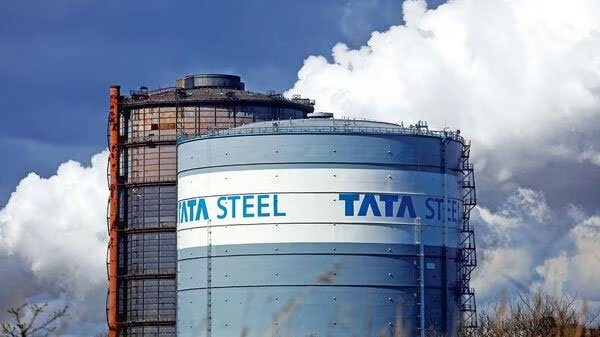Tata Steel aims to enhance production at Neelachal Ispat Nigam Ltd (NINL), recently added to its portfolio, elevating its output from the current 1 million tonnes per annum (mtpa) to an impressive 5.5 mtpa, announced Ashish Anupam, the Vice President of Long Products at Tata Steel.
Tata Steel Ltd is poised to leverage the burgeoning Indian infrastructure sector by doubling its production of long steel products, crucial for construction activities, by 2029. Ashish Anupam, the Vice President of Long Products at Tata Steel, stated that while currently flat steel – used in the automotive and consumer goods industries – constitutes three-fourths of Tata Steel’s capacity, there is a planned shift towards expanding its long products capacity.
At the heart of this expansion is the scale-up of operations at the newly acquired Neelachal Ispat Nigam Ltd (NINL), which will see an increase in output from 1 million tonnes per annum (mtpa) to 5.5 mtpa. This plan also includes the establishment of multiple electric arc furnaces, with one already in progress in Ludhiana, aiming to contribute an additional 2 million tonnes to the long-product capacity.
Ashish Anupam projects that by the fiscal year 2029-30, the company’s capacity for long products will be between 10-11 mtpa, a significant climb from the current 5.3 mtpa. The budget for this ambitious project is estimated to be around ₹35,000 crore.
Although these expansion details are currently in the preliminary stage and await formal board approval, they paint a clear picture of the company’s strategic direction. Presently, Tata Steel’s Indian operations exhibit a long steel capacity of 5.3 mtpa out of a total 21.6 mtpa, distributed among NINL, the Jamshedpur facility, and Usha Martin plants.
Anupam reflected on the company’s evolution, noting that in 2019, Tata Steel’s long product capacity was a mere 3.3 mtpa within a total capacity of about 21 mtpa, with a strong focus on flat steel, as demonstrated by the flat steel-exclusive Bhushan plant acquisition. To diversify, the company decided to ramp up its production of long products.
Long steel products, including bars, rods, and wires, are predominantly used in construction and engineering, whereas flat steel – comprising steel plates and sheets – is versatile, finding applications across diverse industries, from consumer products to automotive manufacturing.
India’s Commitment to Infrastructure Growth Bolsters Long Product Steel Demand
As India’s focus sharpens on strengthening its infrastructure, the market for long steel products is anticipated to surge. The country’s 2023-24 Union budget has significantly increased the capital investment for infrastructure by a robust 33%, boosting it to ₹10 trillion, a substantial leap from the 2019-20 figure.
Steel takes center stage in the construction sector, with nearly two-thirds of India’s steel demand stemming from construction activities. “With the country’s infrastructural development on an upward trajectory, expenditures are set to rise, considering our moderate level of existing infrastructure,” stated Jayanta Roy, Icra Ltd’s senior vice-president. “This will lead to long products’ demand outpacing the growth of the overall steel industry.”
Primary producers like Tata Steel and JSW Steel command the flat steel segment. However, the landscape for long steel is predominantly held by secondary steelmakers. Their relatively compact operations allow them to position themselves near demand hotspots rather than mining sites, and their lower overhead costs provide a competitive edge over larger mills, despite typically lagging in quality and production volume.
Within the primary steel manufacturer domain, Jindal Steel and Power stands out with a present capacity favoring long products.
However, this shift in demand has not gone unnoticed by other steel giants who are now strategizing to expand their capacity for long products to meet the needs of the burgeoning infrastructure and construction sectors. Interest in Rashtriya Ispat Nigam Ltd’s long steel capacity is particularly piqued among many firms due to the government’s divestment plans.
On the stock market front, Tata Steel’s shares climbed by 1.91% on the BSE, closing at ₹133.5 on Friday, ahead of the modest 0.34% rise in the benchmark Sensex. Over the last year, the company’s stock has yielded a commendable return of nearly 31%, outshining the Sensex’s gain of nearly 19%. Meanwhile, its competitors, JSW Steel and Jindal Steel and Power, have logged returns of 18% and 39%, respectively, for the same period.











